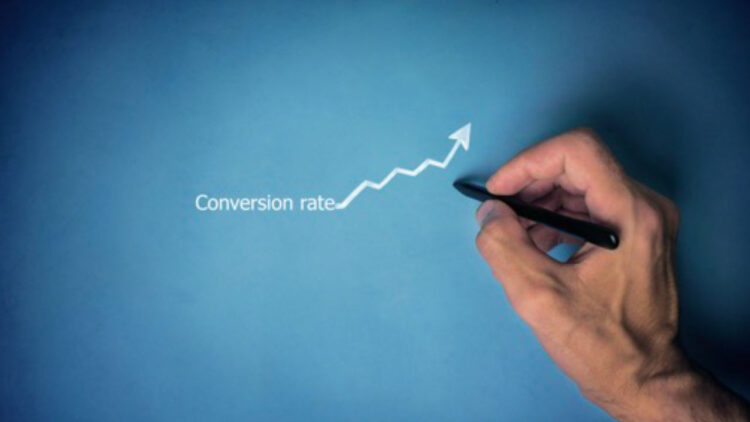It is critical to increasing your conversion rates. A high conversion rate is the foundation of a large sales volume. Here are some eye-opening statistics that demonstrate the importance of increasing website conversions.
Your Website’s Service Pages are among the most important aspects of your company’s website. People will visit these pages if they consider purchasing from you. So, to secure as many conversions as possible, ensure your service pages are fully optimized to capture leads.
- A typical website conversion rate is around 2.35%. However, the top 10% of companies have 3-5x higher conversion rates than the average.
- 7 out of 10 conversion rate optimization (CRO) marketers use the results to inform other marketing initiatives.
- User-generated content can boost your conversion rate by 161%.
In this article, we’ll share our best tips for increasing the conversion rate of your service pages.
Here are the following 5 Ways to Improve the Conversion Rate of Your Website’s Service Pages:

1. Remove all distractions:
Nothing is more annoying than a website that pulls you in too many directions.
Your landing page should be simple, clear, and easy to use. If it isn’t necessary, leave it out. Please keep it simple and tell visitors what they need to know about the web design of Chicago Service Pages.
Here is the following thing you can remove destruction:
- Subheadings and the headline
- Advantages and features
- Reviews and testimonials
Visual combined with context that demonstrates what you’re offering. Other factors include a live chat box, social proof, and video (more on these below), but the main point remains: remove all distractions. You want your visitors to focus solely on your offer.
2. Make a compelling and distinct value proposition:
The value proposition is an essential conversion factor because it defines the ability of your conversion rate. Many marketers attempt to improve results by modifying page elements such as font colors and sizes, button shapes, images, incentives, and so on when the first step should be to focus on strengthening their value propositions.
Take note of the distinction between your company’s and your product’s value proposition. Here are the following factors for a good value proposition?
- It must be distinct from your competitors’ offerings.
- Except for one value dimension, you can match a competitor. However, you must excel in at least one aspect of value (a key important factor for the buyer).
Creating a value proposition necessitates an extensive reflection on what makes your company and its products and services unique. Therefore, it would help if you worked on refining your value proposition until you can express it in a single, instantly credible sentence.
Also read: Wearable Technology Are New Healthcare Revolution – Explore
Identifying, expressing, testing/measuring, and optimizing value propositions is a continuous process for the Website’s Service Pages. Use A/B testing to accomplish this.
3. Include Social Proof:
The vast majority of consumers, 95%, consider customer reviews when making a purchase, and 93% are hesitant to buy if there are no customer reviews. In addition, 73% will not purchase until they have read reviews. Conversion rates are heavily influenced by online reputation and presence. It never hurts to brag about yourself, and these statistics show that including social proof on your site can help with conversion rate optimization.
Including star/number ratings is beneficial, but linking to directory pages where customers have left reviews is even better. Also, include reviews and testimonials on your Website’s Service Pages so that visitors do not have to visit a third-party site.
4. Using strong calls to action, encourage visitors to make a purchase:
Many online business owners make the mistake of failing to add effective calls to action to their service pages. Calls to action are simple instructions that your customers can follow to learn more about your company or invest in what you offer.
It may appear simple, but sometimes web design company Chicago visitors need to be told what to do next. As a result, if your selling pages lack clear calls to action, you could lose a lot of sales.
You’ll need to put a lot of thought into your calls-to-action design and wording for the best results. To begin, make certain that your instructions are difficult to overlook. It helps if you put them on a clickable button that is bright and bold. Choosing a color that contrasts well against the background of your service page will yield the best results.
The positioning of your calls to action is also critical. Again, including one above the fold can be effective because people will not have to scroll to see it. You should also include a call to action alongside any important information that might persuade someone to purchase so they can do so immediately.
There are also some best practices to remember when writing your call to action copy. For example, you should:
- Make use of a strong command verb.
- Use “now” and “today” to convey a sense of urgency.
- Use scarcity to appeal to your customers’ fear of missing out.
- Make it clear if you’re providing something for free.
These strategies will assist you in creating powerful call-to-action buttons that will significantly improve the conversion rate of your Website’s Service Pages.
5. Provide lots of whitespaces. Remove clutter:
Trying to cram a lot of information onto a single page is tempting. But as designers, we adore our product and want to discuss it as much as possible.
Visitors have a different perspective. They require time to pause, reflect, and analyze. Whitespace assists them in accomplishing this.
It gives the page a natural structure so the eye can easily jump to the information it seeks. Improving the usability of your landing pages in this way is an excellent way to boost website conversion rates.
Conclusion:
A website conversion is a web analytics event that signifies the completion of a website goal. Goals differ depending on the purpose and nature of your website and business. The global average for e-commerce conversion is 2.58%. In the United States, the average e-commerce conversion rate is 2.57%. The global average for e-commerce conversion is 3.81%.
Including success stories, testimonials, case studies, logos of companies you’ve worked with, and so on, the right after an introduction entices a visitor to want to learn more.













